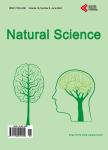Modeling the impacts of climate variability and hurricane on carbon sequestration in a coastal forested wetland in South Carolina
Modeling the impacts of climate variability and hurricane on carbon sequestration in a coastal forested wetland in South Carolina作者机构:Center for Forested Wetland Research USDA Forest Service Cordesville USA Earth Science Research Center EOS University of New Hampshire Durham US Earth Science Research Center EOS University of New Hampshire Durham USA Eastern Forest Environmental Threat Assessment Center Southern Research Station USDA Forest Service Raleigh USA
出 版 物:《Natural Science》 (自然科学期刊(英文))
年 卷 期:2013年第5卷第3期
页 面:375-388页
学科分类:07[理学] 070601[理学-气象学] 0706[理学-大气科学]
主 题:Greenhouse Gas Forest-DNDC Biogeochemical Model Biomass Climate Change
摘 要:The impacts of hurricane disturbance and climate variability on carbon dynamics in a coastal forested wetland in South Carolina of USA were simulated using the Forest-DNDC model with a spatially explicit approach. The model was validated using the measured biomass before and after Hurricane Hugo and the biomass inventories in 2006 and 2007, showed that the Forest- DNDC model was applicable for estimating carbon dynamics with hurricane disturbance. The simulated results indicated that Hurricane Hugo in 1989 substantially influenced carbon storage immediately after the disturbance event. The simulated net ecosystem exchange (NEE) for the 58-year period (1950-2007) indicated that the hurricane reduced CO2 sequestration due primarily to the increased decomposition of a large amount of litter and woody debris, including fallen trees (over 80% of pre-hurricane trees), debris and branches, and dead roots. The inter-annual fluctuation of soil CO2 flux showed that the climate variability interfered substantially soil carbon dynamics in the forest. The results showed that there were substantial spatial and temporal differences in CO2 flux (3.2 - 4.8 Mg·C·ha–1) and wood biomass due to the differences in physical and biogeochemical characteristics in the forest.



